
2013 CFA Level 1 - Book 5
.pdf

BOOK 5 - FIXED INCOME, DERIVATIVES, AND ALTERNATIVE INVESTMENTS
Reading Assignments and Learning Outcome Statements........................................ |
3 |
Study Session 15 - Fixed Income: Basic Concepts................................................. |
11 |
Study Session 16- Fixed Income: Analysis and Valuation .................................... |
87 |
Self-Test - Fixed Income Investments ................................................................. |
186 |
Study Session 17- Derivatives ........................................................................... |
191 |
Study Session 18- Alternative Investments ........................................................ |
278 |
Self-Test - Derivatives and Alternative Investments ............................................ |
309 |
Formulas............................................................................................................ |
312 |
Index................................................................................................................. |
314 |
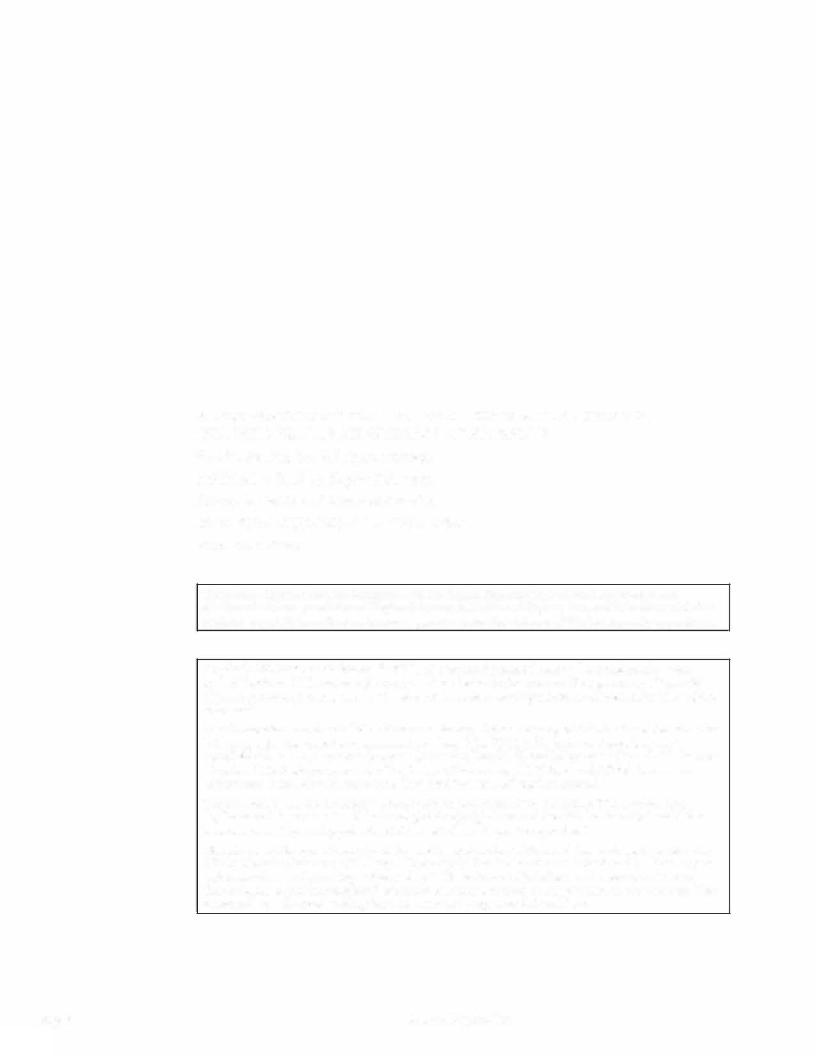
SCHWESERNOTES™ 20 13 CPA LEVEL I BOOK 5: FIXED INCOME, DERIVATIVES, AND ALTERNATIVE INVESTMENTS
©20 12 Kaplan, Inc. All rights reserved. Published in 20 12 by Kaplan Schweser. Printed in the United States of America.
ISBN: 978-1 -4277-4265-0 I 1-4277-4265-0
PPN: 3200-2848
If this book does not have the hologram with the Kaplan Schweser logo on the back cover, it was distributed without permission of Kaplan Schweser, a Division of Kaplan, Inc., and is in direct violation of global copyright laws. Your assistance in pursuing potential violators of this law is greatly appreciated.
Required CFA Institute disclaimer: "CFA® and Chartered Financial Analyst® are trademarks owned by CFA Institute. CFA Institute (formerly the Association for Investment Management and Research)
does not endorse, promote, review, or warrant the accuracy of the products or services offered by Kaplan Schweser."
Certain materials contained within this text are the copyrighted property of CFA Institute. The following is the copyright disclosure for these materials: "Copyright, 2012, CFA Institute. Reproduced and republished from 2013 Learning Outcome Statements, Level I, II, and III questions from CFA® Program Materials, CFA Institute Standards of Professional Conduct, and CFA Institute's Global Investment Performance Standards with permission from CFA Institute. All Rights Reserved."
These materials may not be copied without written permission from the author. The unauthorized duplication of these notes is a violation of global copyright laws and the CFA Institute Code of Ethics. Your assistance in pursuing potential violators of this law is greatly appreciated.
Disclaimer: The SchweserNotes should be used in conjunction with the original readings as set forth by CFA Institute in their 2013 CFA Level I Study Guide. The information contained in these Notes covers topics contained in the readings referenced by CFA Institute and is believed to be accurate. However, their accuracy cannot be guaranteed nor is any warranty conveyed as to your ultimate exam success. The authors of the referenced readings have not endorsed or sponsored these Notes.
Page 2 |
©2012 Kaplan, Inc. |
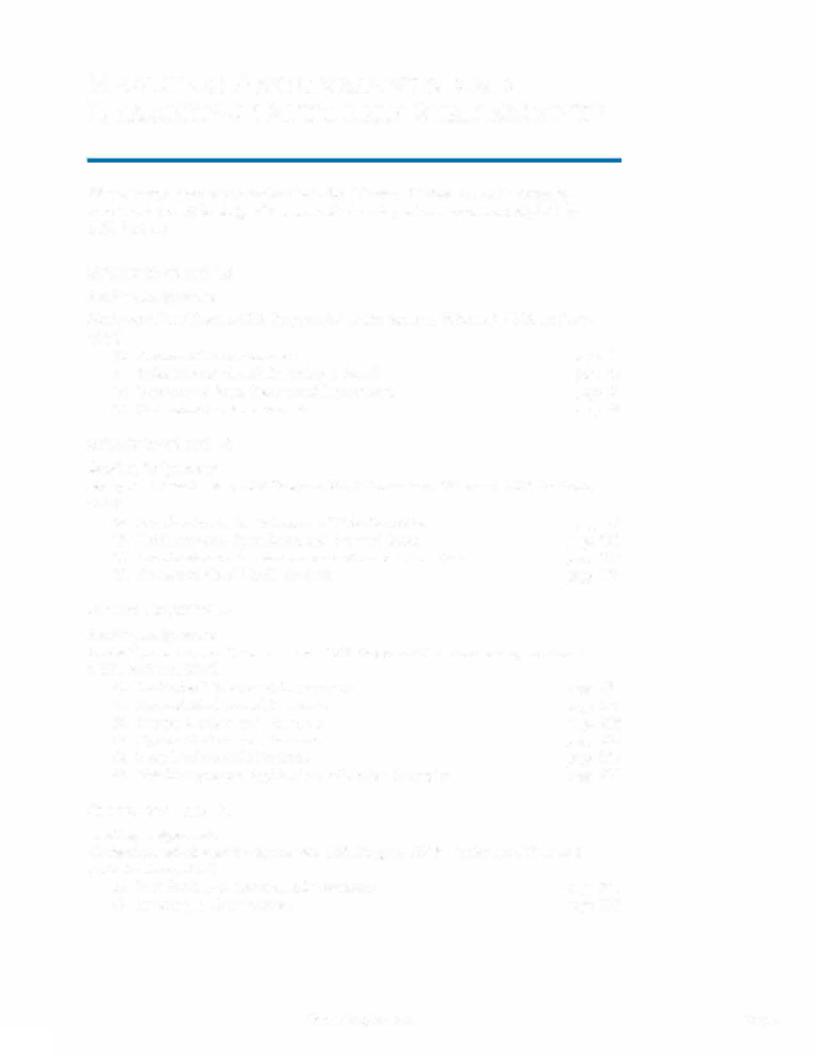
READING ASSIGNMENTS AND LEARNING OUTCOME STATEMENTS
Thefollowing material is a review of the FixedIncome, Derivatives, andAlternative Investmentsprinciples designed to address the learning outcome statements setforth by CPA Institute.
STUDY SESSION 15 |
|
|
Reading Assignments |
|
|
Equity andFixedIncome, CFA Program 20 13 Curriculum, Volume 5 (CFA Institute, |
||
20 12) |
Features of Debt Securities |
page 1 1 |
52. |
||
53. |
Risks Associated with Investing in Bonds |
page 25 |
54. Overview of Bond Sectors and Instruments |
page 46 |
|
55. Understanding Yield Spreads |
page 69 |
|
STUDY SESSION 16 |
|
|
|
Reading Assignments |
|
|
|
Equity andFixed Income, CFA Program 20 13 Curriculum, Volume 5 (CFA Institute, |
|
||
201 2) |
Introduction to the Valuation of Debt Securities |
page |
87 |
56. |
|||
57. Yield Measures, Spot Rates, and Forward Rates |
page 1 |
0 1 |
|
58. Introduction to the Measurement of Interest Rate Risk |
page 1 34 |
||
59. |
Fundamentals of Credit Analysis |
page 157 |
|
STUDY SESSION 17 |
|
|
Reading Assignments |
CFA Program 2013 Curriculum, Volume 6 |
|
Derivatives andAlternative Investments, |
||
(CFA Institute, 2012) |
|
page 191 |
60. Derivative Markets and Instruments |
||
6 1 . Forward Markets and Contracts |
page 1 97 |
|
62. Futures Markets and Contracts |
|
page 2 1 3 |
63. Option Markets and Contracts |
|
page 226 |
64. Swap Markets and Contracts |
|
page 254 |
65. Risk Management Applications of Option Strategies |
page 268 |
|
STUDY SESSION 18 |
|
|
Reading Assignments |
CFA Program 2013 Curriculum, Volume 6 |
|
Derivatives andAlternative Investments, |
||
(CFA Institute, 2012) |
|
page 278 |
66. Introduction to Alternative Investments |
||
67. Investing in Commodities |
|
page 303 |
©20 12 Kaplan, Inc. |
Page 3 |
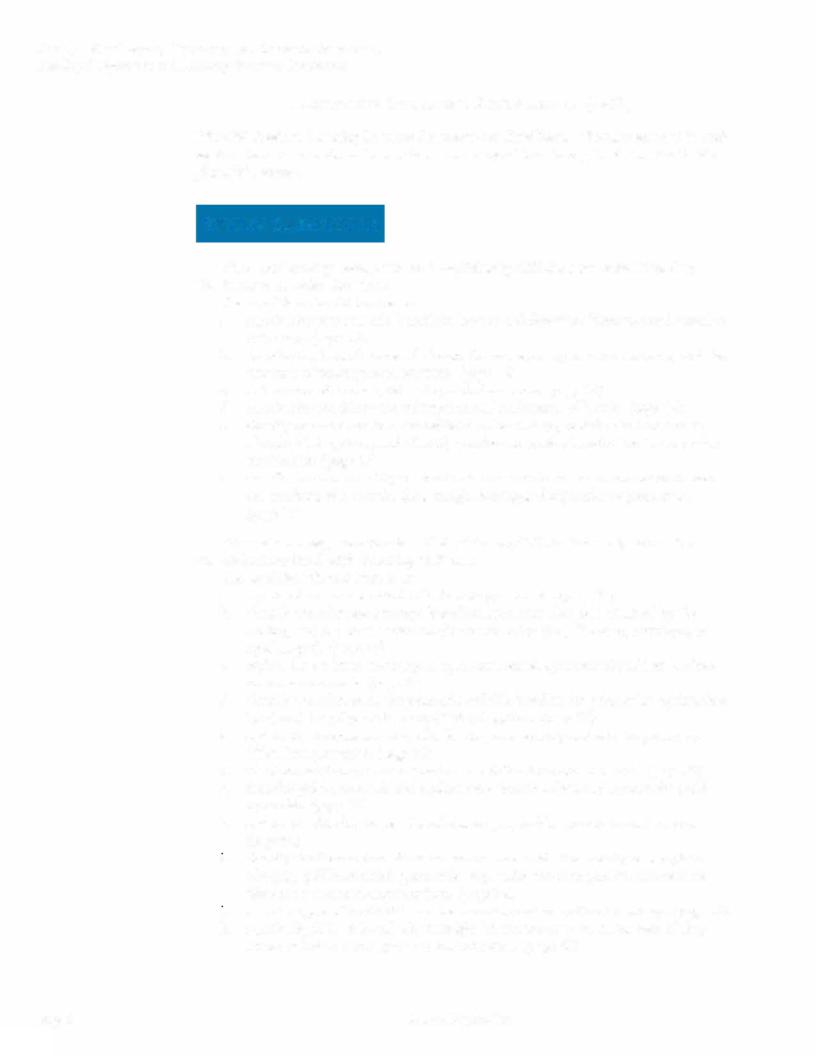
Book 5 -Fixed Income, Derivatives, and Alternative Investments
Reading Assignments and Learning Outcome Statements
LEARNING OUTCOME STATEMENTS (LOS)
The CPA Institute Learning Outcome Statements are listed below. These are repeated in each topic review; however, the order may have been changed in order to get a betterfit with the flow ofthe review.
STUDY SESSION 15
The topical coverage corresponds with thefollowing CPA Institute assigned reading: |
|
52. Features of Debt Securities |
|
The candidate should be able to: |
|
a. |
explain the purposes of a bond's indenture and describe affirmative and negative |
b. |
covenants. (page 1 1 ) |
describe the basic features of a bond, the various coupon rate structures, and the |
|
c. |
structure of floating-rate securities. (page 12) |
define accrued interest, full price, and clean price. (page 14) |
|
d. |
explain the provisions for redemption and retirement of bonds. (page 14) |
e. identify common options embedded in a bond issue, explain the importance |
|
|
of embedded options, and identify whether an option benefits the issuer or the |
f. |
bondholder. (page 1 6) |
describe methods used by institutional investors in the bond market to finance |
|
|
the purchase of a security (i.e., margin buying and repurchase agreements) . |
|
(page 17) |
The topical coverage corresponds with thefollowing CPA Institute assigned reading:
53. Risks Associated with Investing in Bonds
The candidate should be able to:
a. explain the risks associated with investing in bonds. (page 25)
b. identify the relations among a bond's coupon rate, the yield required by the market, and the bond's price relative to par value (i.e., discount, premium, or equal to par). (page 27)
explain how a bond maturity, coupon, embedded options and yield level affect its interest rate risk. (page 27)
identify the relation of the price of a callable bond to the price of an option-free bond and the price of the embedded call option. (page 29)
explain the interest rate risk of a floating-rate security and why its price may differ from par value. (page 29)
calculate and interpret the duration and dollar duration of a bond. (page 30) describe yield-curve risk and explain why duration does not account for yield curve risk. (page 32)
explain the disadvantages of a callable or prepayable security to an investor. (page 34)
identify the factors that affect the reinvestment risk of a security and explain why prepayable amortizing securities expose investors to greater reinvestment risk than nonamortizing securities. (page 34)
describe types of credit risk and the meaning and role of credit ratings. (page 35) explain liquidity risk and why it might be important to investors even if they expect to hold a security to the maturity date. (page 36)
Page 4 |
©2012 Kaplan, Inc. |
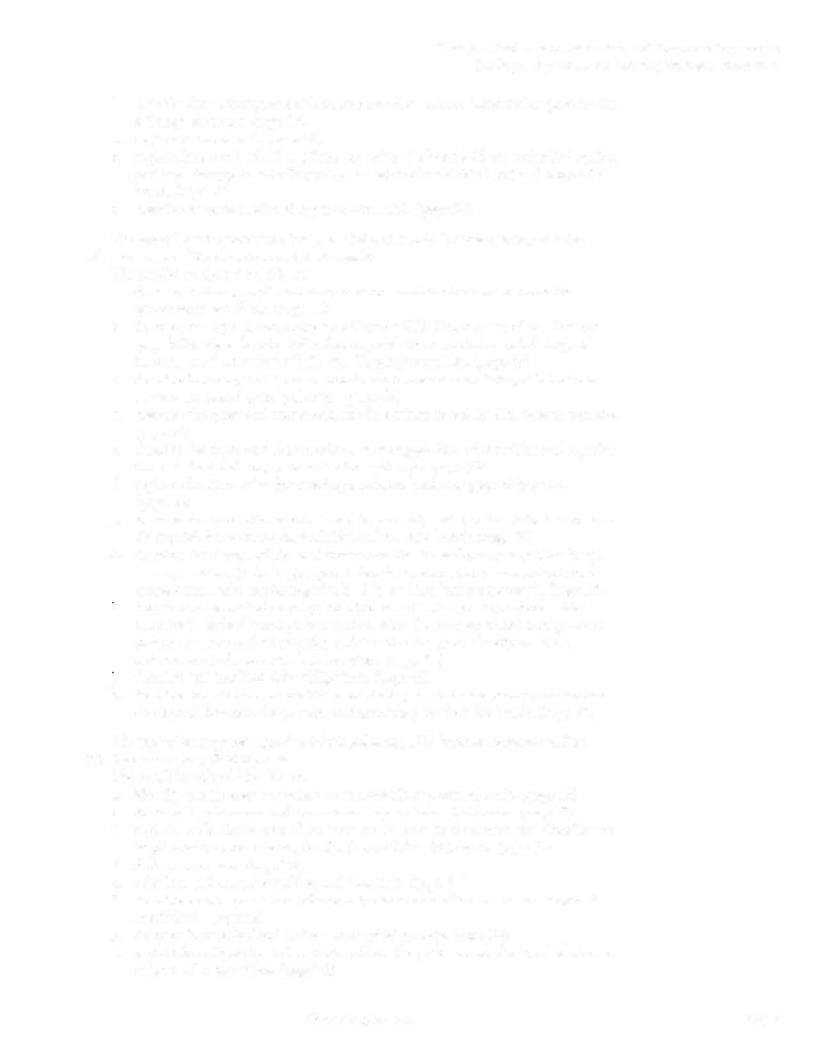
Book 5 - Fixed Income, Derivatives, and Alternative Investments
Reading Assignments and Learning Outcome Statements
I.describe the exchange rate risk an investor faces when a bond makes payments in a foreign currency. (page 37)
m.explain inflation risk. (page 37)
n.explain how yield volatility affects the price of a bond with an embedded option and how changes in volatility affect the value of a callable bond and a purable bond. (page 37)
o.describe sovereign risk and types of event risk. (page 38)
The topical coverage corresponds with thefollowing CFA Institute assigned reading: |
|
|
54. Overview of Bond Sectors and Instruments |
|
|
The candidate should be able to: |
|
|
a. |
describe features, credit risk characteristics, and distribution methods for |
|
b. |
government securities. (page 46) |
|
describe the types of securities issued by the U.S. Department of the Treasury |
|
|
|
(e.g., bills, notes, bonds, and inflation protection securities), and distinguish |
|
c. |
between on-the-run and off-the-run Treasury securities. (page 47) |
|
describe how stripped Treasury securities are created and distinguish between |
|
|
d. |
coupon strips and principal strips. (page 49) |
|
describe the types and characteristics of securities issued by U.S. federal agencies. |
|
|
e. |
(page 49) |
|
describe the types and characteristics of mortgage-backed securities and explain |
|
|
f. |
the cash flow and prepayment risk for each type. (page 50) |
|
explain the motivation for creating a collateralized mortgage obligation. |
|
|
g. |
(page 52) |
|
describe the types of securities issued by municipalities in the United States and |
|
|
h. |
distinguish between tax-backed debt and revenue bonds. (page 53) |
|
describe the characteristics and motivation for the various types of debt issued |
|
|
|
by corporations (including corporate bonds, medium-term notes, structured |
|
|
notes, commercial paper, negotiable CDs, and bankers acceptances). (page 55) |
|
1. |
define an asset-backed security, describe the role of a special purpose vehicle |
|
|
in an asset-backed security's transaction, state the motivation for a corporation |
|
|
to issue an asset-backed security, and describe the types of external credit |
|
J· |
enhancements for asset-backed securities. (page 59) |
|
describe collateralized debt obligations. (page 60) |
|
|
k. |
describe the mechanisms available for placing bonds in the primary market and |
|
|
distinguish between the primary and secondary markets for bonds. (page 61) |
|
The topical coverage corresponds with thefollowing CFA Institute assigned reading: |
|
|
55. Understanding Yield Spreads |
|
|
The candidate should be able to: |
|
|
a. |
identify the interest rate policy tools available to a central bank. (page 69) |
|
b. |
describe a yield curve and the various shapes of the yield curve. (page 70) |
|
c. |
explain the basic theories of the term structure of interest rates and describe the |
|
d. |
implications of each theory for the shape of the yield curve. (page 71) |
|
define a spot rate. (page 73) |
|
|
e. |
calculate and compare yield spread measures. (page 74) |
|
f. |
describe credit spreads and relationships between credit spreads and economic |
|
g. |
conditions. (page 75) |
|
describe how embedded options affect yield spreads. (page 76) |
|
|
h. |
explain how liquidity and issue-size affects the yield spread of a bond relative to |
|
|
other similar securities. (page 76) |
|
|
©2012 Kaplan, Inc. |
Page 5 |
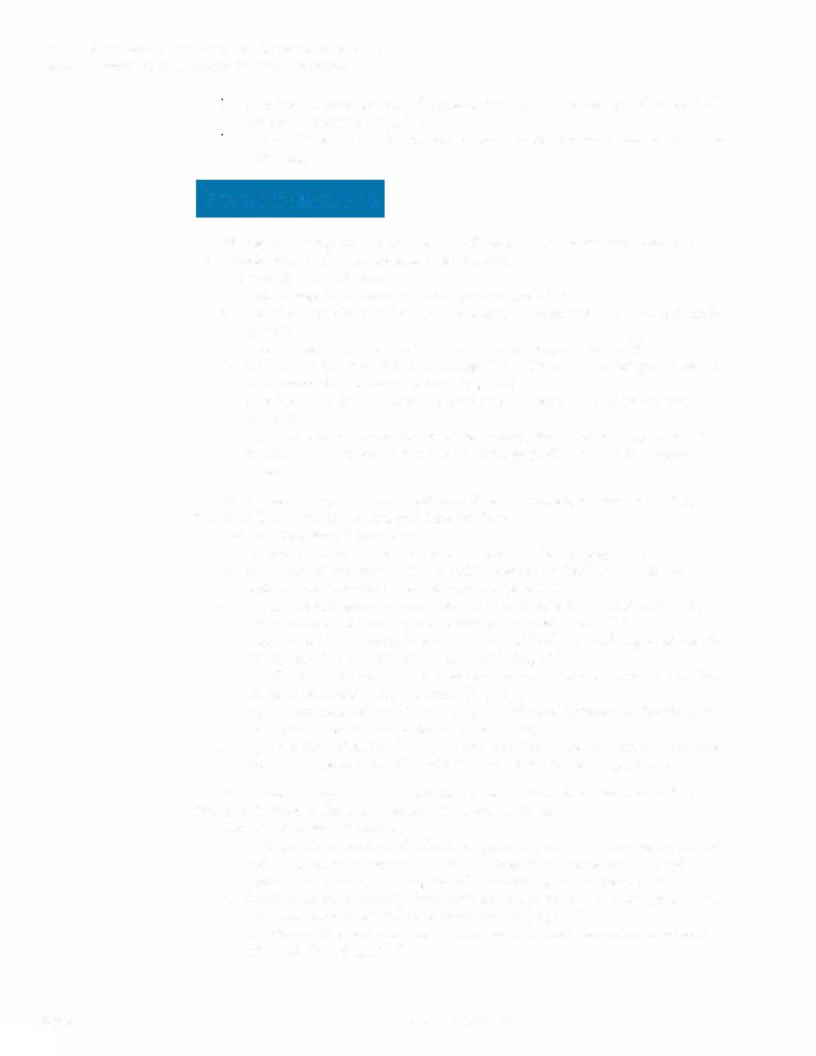
Book 5 - Fixed Income, Derivatives, and Alternative Investments Reading Assignments and Learning Outcome Statements
1.
)·
calculate the after-tax yield of a taxable security and the tax-equivalent yield of a tax-exempt security. (page 77) define LIBOR and explain its importance to funded investors who borrow short term. (page 78)
STUDY SESSION 16
56.
57.
58.
The topical coverage corresponds with thefollowing CFA Institute assigned reading:
Introduction to the Valuation of Debt Securities |
|
The candidate should be able to: |
|
a. |
explain steps in the bond valuation process. (page 87) |
b. |
describe types of bonds for which estimating the expected cash flows is difficult. |
c. |
(page 87) |
calculate the value of a bond (coupon and zero-coupon). (page 88) |
|
d. |
explain how the price of a bond changes if the discount rate changes and as the |
e. |
bond approaches its maturity date. (page 9 1) |
calculate the change in value of a bond given a change in its discount rate. |
|
f. |
(page 92) |
explain and demonstrate the use of the arbitrage-free valuation approach and |
|
|
describe how a dealer can generate an arbitrage profit if a bond is mispriced. |
|
(page 94) |
The topical coverage corresponds with thefollowing CFA Institute assigned reading:
Yield Measures, Spot Rates, and Forward Rates |
|
The candidate should be able to: |
|
a. |
describe the sources of return from investing in a bond. (page 1 01) |
b. |
calculate and interpret traditional yield measures for fixed-rate bonds and |
c. |
explain their limitations and assumptions. (page 101) |
explain the reinvestment assumption implicit in calculating yield to maturity |
|
d. |
and describe the factors that affect reinvestment risk. (page 1 08) |
calculate and interpret the bond equivalent yield of an annual-pay bond and the |
|
e. |
annual-pay yield of a semiannual-pay bond. (page 1 10) |
describe the calculation of the theoretical Treasury spot rate curve and calculate |
|
f. |
the value of a bond using spot rates. (page 1 1 1) |
explain nominal, zero-volatility, and option-adjusted spreads and the relations |
|
g. |
among these spreads and option cost. (page 1 1 5) |
explain a forward rate and calculate spot rates from forward rates, forward rates |
|
|
from spot rates, and the value of a bond using forward rates. (page 1 18) |
The topical coverage corresponds with thefollowing CFA Institute assigned reading:
Introduction to the Measurement of Interest Rate Risk
The candidate should be able to:
a. distinguish between the full valuation approach (the scenario analysis approach) and the duration/convexity approach for measuring interest rate risk, and explain the advantage of using the full valuation approach. (page 134)
b. describe the price volatility characteristics for option-free, callable, prepayable, and putable bonds when interest rates change. (page 1 36)
c. describe positive convexity and negative convexity, and their relation to bond price and yield. (page 136)
Page 6 |
©2012 Kaplan, Inc. |
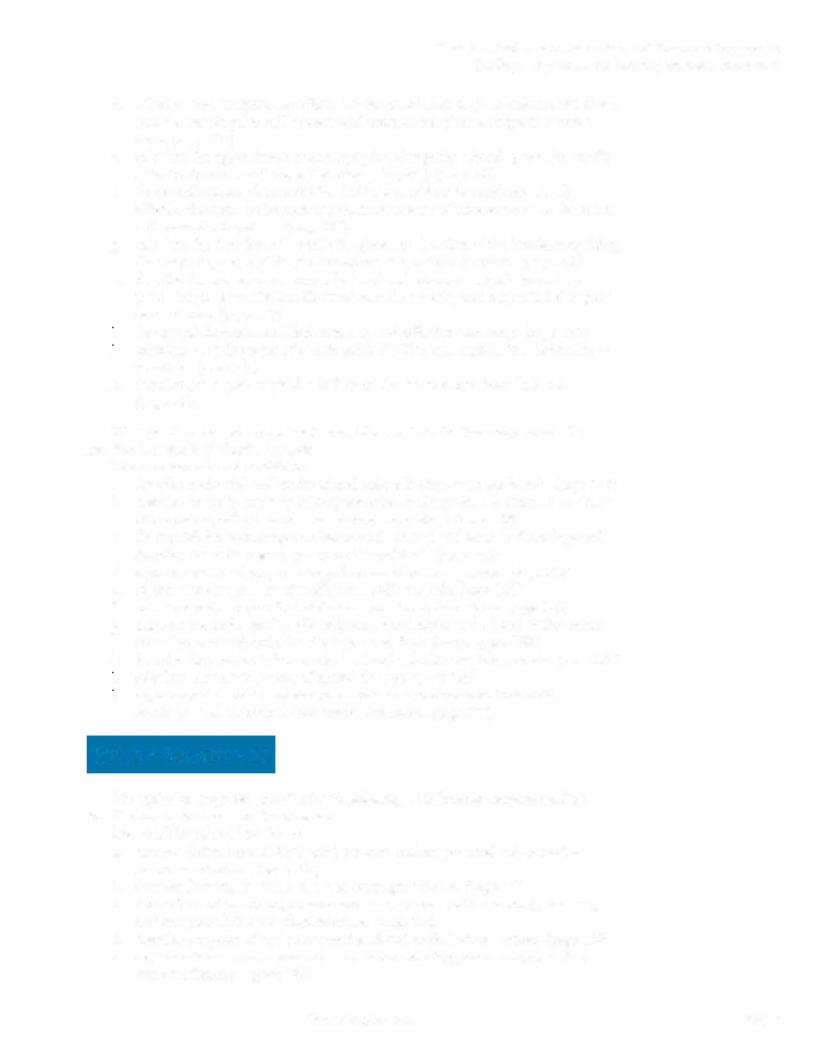
d.
e. f.
g.
h.
1.
)· k.
Book 5 - Fixed Income, Derivatives, and Alternative Investments
Reading Assignments and Learning Outcome Statements
calculate and interpret the effective duration of a bond, given information about how the bond's price will increase and decrease for given changes in interest rates. (page 1 39)
calculate the approximate percentage price change for a bond, given the bond's effective duration and a specified change in yield. (page 141)
distinguish among the alternative definitions of duration and explain why effective duration is the most appropriate measure of interest rate risk for bonds with embedded options. (page 142)
calculate the duration of a portfolio, given the duration of the bonds comprising the portfolio, and explain the limitations of portfolio duration. (page 144) describe the convexity measure of a bond and estimate a bond's percentage price change, given the bond's duration and convexity and a specified change in interest rates. (page 145)
distinguish between modified convexity and effective convexity. (page 147) calculate the price value of a basis point (PVBP), and explain its relationship to duration. (page 147)
describe the impact of yield volatility on the interest rate risk of a bond. (page 148)
The topical coverage corresponds with thefollowing CFA Institute assigned reading:
59. Fundamentals ofCredit Analysis |
||
|
The candidate should be able to: |
|
|
a. |
describe credit risk and credit-related risks affecting corporate bonds. (page 1 57) |
|
b. |
describe seniority rankings of corporate debt and explain the potential violation |
|
c. |
ofthe priority of claims in a bankruptcy proceeding. (page 158) |
|
distinguish between corporate issuer credit ratings and issue credit ratings and |
|
|
d. |
describe the rating agency practice of "notching". (page 159) |
|
explain risks in relying on ratings from credit rating agencies. (page 160) |
|
|
e. |
explain the components of traditional credit analysis. (page 161) |
|
f. |
calculate and interpret financial ratios used in credit analysis. (page 1 63) |
|
g. |
evaluate the credit quality of a corporate bond issuer and a bond of that issuer, |
|
h. |
given key financial ratios for the issuer and the industry. (page 167) |
|
describe factors that influence the level and volatility of yield spreads. (page 169) |
|
|
1. |
calculate the return impact of spread changes. (page 1 69) |
|
)· |
explain special considerations when evaluating the credit of high yield, |
|
|
sovereign, and municipal debt issuers and issues. (page 172) |
STUDY SESSION 17 |
||
60. |
The topical coverage corresponds with thefollowing CFA Institute assigned reading: |
|
Derivative Markets and Instruments |
||
|
The candidate should be able to: |
|
|
a. |
define a derivative and distinguish between exchange-traded and over-the |
|
b. |
counter derivatives. (page 191) |
|
contrast forward commitments and contingent claims. (page 191) |
|
|
c. |
define forward contracts, futures contracts, options (calls and puts), and swaps |
|
d. |
and compare their basic characteristics. (page 1 92) |
|
describe purposes of and controversies related to derivative markets. (page 1 92) |
|
|
e. |
explain arbitrage and the role it plays in determining prices and promoting |
|
|
market efficiency. (page 193) |
©2012 Kaplan, Inc. |
Page 7 |
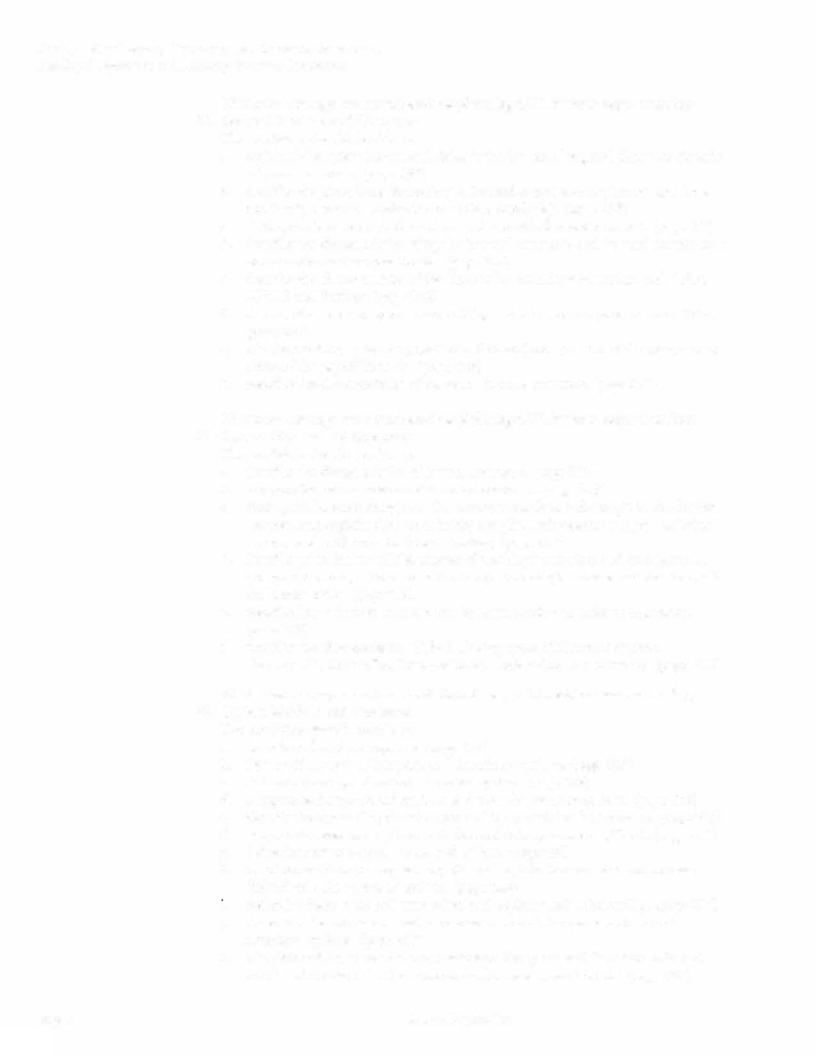
Book 5 - Fixed Income, Derivatives, and Alternative Investments
Reading Assignments and Learning Outcome Statements
61 . |
The topical coverage corresponds with thefollowing CPA Institute assigned reading: |
|
Forward Markets and Contracts |
||
|
The candidate should be able to: |
|
|
a. |
explain delivery/settlement and default risk for both long and short positions in |
|
b. |
a forward contract. (page 197) |
|
describe the procedures for settling a forward contract at expiration, and how |
|
|
c. |
termination prior to expiration can affect credit risk. (page 198) |
|
distinguish between a dealer and an end user of a forward contract. (page 199) |
|
|
d. |
describe the characteristics of equity forward contracts and forward contracts on |
|
e. |
zero-coupon and coupon bonds. (page 200) |
|
describe the characteristics of the Eurodollar time deposit market, and define |
|
|
f. |
LIBOR and Euribor. (page 202) |
|
describe forward rate agreements (FRAs) and calculate the gain/loss on a FRA. |
|
|
g. |
(page 203) |
|
calculate and interpret the payoff of a FRA and explain each of the component |
|
|
|
terms of the payoff formula. (page 203) |
|
h. describe the characteristics of currency forward contracts. (page 205) |
|
62. |
The topical coverage corresponds with thefollowing CPA Institute assigned reading: |
|
Futures Markets and Contracts |
||
|
The candidate should be able to: |
|
|
a. |
describe the characteristics of futures contracts. (page 213) |
|
b. |
compare futures contracts and forward contracts. (page 213) |
|
c. distinguish between margin in the securities markets and margin in the futures |
|
|
|
markets, and explain the role of initial margin, maintenance margin, variation |
|
d. |
margin, and settlement in futures trading. (page 214) |
|
describe price limits and the process of marking to market, and calculate and |
|
|
|
interpret the margin balance, given the previous day's balance and the change in |
|
e. |
the futures price. (page 216) |
|
describe how a futures contract can be terminated at or prior to expiration. |
|
|
f. |
(page 218) |
|
describe the characteristics of the following types of futures contracts. |
|
|
|
Treasury bill, Eurodollar, Treasury bond, stock index, and currency. (page 219) |
The topical coverage corresponds with thefollowing CPA Institute assigned reading: |
|
63. Option Markets and Contracts |
|
The candidate should be able to: |
|
a. |
describe call and put options. (page 226) |
b. |
distinguish between European and American options. (page 227) |
c. |
define the concept of moneyness of an option. (page 228) |
d. |
compare exchange-traded options and over-the-counter options. (page 229) |
e. |
identify the types of options in terms of the underlying instruments. (page 229) |
f. |
compare interest rate options with forward rate agreements (FRAs). (page 230) |
g. |
define interest rate caps, floors, and collars. (page 231) |
h. |
calculate and interpret option payoffs and explain how interest rate options |
|
differ from other types of options. (page 233) |
1. |
define intrinsic value and time value, and explain their relationship. (page 234) |
j. |
determine the minimum and maximum values of European options and |
k. |
American options. (page 237) |
calculate and interpret the lowest prices of European and American calls and |
|
|
puts based on the rules for minimum values and lower bounds. (page 238) |
Page 8 |
©2012 Kaplan, Inc. |

64.
65.
Book 5 - Fixed Income, Derivatives, and Alternative Investments
Reading Assignments and Learning Outcome Statements
I.explain how option prices are affected by the exercise price and the time to expiration. (page 242)
m.explain put-call parity for European options, and explain how put-call parity is related to arbitrage and the construction of synthetic options. (page 243) explain how cash flows on the underlying asset affect put-call parity and the lower bounds of option prices. (page 245)
determine the directional effect ofan interest rate change or volatility change on
an option's price. (page 246)n.o.
The topical coverage corresponds with thefollowing CFA Institute assigned reading:
Swap Markets and Contracts
The candidate should be able to:
a. describe the characteristics of swap contracts and explain how swaps are terminated. (page 255)
b. describe, calculate, and interpret the payments of currency swaps, plain vanilla interest rate swaps, and equity swaps. (page 256)
The topical coverage corresponds with thefollowing CFA Institute assigned reading:
Risk Management Applications of Option Strategies
The candidate should be able to:
a. determine the value at expiration, the profit, maximum profit, maximum loss, breakeven underlying price at expiration, and payoff graph of the strategies of buying and selling calls and puts and determine the potential outcomes for investors using these strategies. (page 268)
b. determine the value at expiration, profit, maximum profit, maximum loss, breakeven underlying price at expiration, and payoff graph of a covered call strategy and a protective put strategy, and explain the risk management application of each strategy. (page 272)
STUDY SESSION 18
The topical coverage corresponds with thefollowing CFA Institute assigned reading:
66. Introduction to Alternative Investments
The candidate should be able to:
a. compare alternative investments with traditional investments. (page 278) b. describe categories of alternative investments. (page 278)
c. describe potential benefits of alternative investments in the context of portfolio management. (page 279)
d. describe hedge funds, private equity, real estate, commodities, and other alternative investments, including, as applicable, strategies, sub-categories, potential benefits and risks, fee structures, and due diligence. (page 280)
e. describe issues in valuing, and calculating returns on, hedge funds, private equity, real estate, and commodities. (page 280)
f. describe, calculate, and interpret management and incentive fees and net-of-fees returns to hedge funds. (page 292)
g. describe risk management of alternative investments. (page 294)
©2012 Kaplan, Inc. |
Page 9 |
